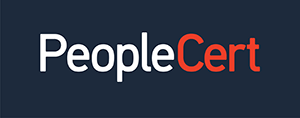We're open through the holidays to support your upskilling goals — Which training do you want to book?
We're open through the holidays to support your upskilling goals — Which training do you want to book?
Unable to find what you're searching for?
We're here to help you find it(1).pngL.jpg)
There are three main advantages to using blockchain.
Also Read: What is a Blockchain Wallet and How Does It Work?
Blockchain is a combination of three fundamental concepts:
Blockchain is made up of several chains made up of several blocks. One block is made up of three elements:
When a chain’s first block is created, a nonce creates a cryptographic hash. Unless the data contained within the block is mined, it is said to be permanently attached to the nonce.
A miner can create a new block on a given chain using the process of mining. Every block has a unique hash and nonce within the blockchain. However, it also references the previous block’s hash, making block mining challenging especially on long chains.
A miner solves the complex mathematical challenge of finding nonces that generate an accepted hash using specialised software. A nonce is 32-bits while a hash is 256-bit, providing the possibility of about four billion combinations that should be mined before finding the right combination. Any changes made to previous blocks in a chain will demand the re-mining of the block to be changed as well as all the blocks that follow. All of these conditions make it nearly impossible for anyone to manipulate a blockchain. Finding golden nonces requires significant computing power and time. When blockchains are mined successfully, every node within the network accepts the change. The minor then receives an equivalent financial reward.
Decentralisation of data storage for security and access is a fundamental concept of blockchain technology. No single enterprise or computer system can own a complete blockchain. Instead, a blockchain is a distributed ledger connected to a single thread or chain through the nodes. A node could mean any electronic device that can maintain a network’s functioning and copies of the chain.
Every node has a unique copy of the given blockchain. The network uses an algorithm to approve any newly mined block for the blockchain for trust, verification and updating. Since a blockchain is transparent, you can view and check every action given in the ledger. Every blockchain participant also gets a unique identification number that displays their transactions. Combining public data with a check and balance system enables the blockchain to maintain its integrity and build trust among users. In other words, a blockchain can be interpreted as a technology used for trust scalability.
Consider a situation where you are transferring money to a friend using your bank account. You need to go to the netbanking website, log in and transfer the fund amount to the recipient’s account after entering their information. Once your transaction is complete, the bank updates its payment records. While this might seem fairly straightforward, there is a grave risk that most people neglect. Anyone familiar with netbanking transaction risks often uses third-party platforms to avoid the risks associated with netbanking.
This is what gave rise to blockchain technology. Blockchain is a distributed digital ledger that is growing in popularity over the past few years. The reason for this rising popularity is the decentralisation that blockchain offers. Keeping transaction records and data secure are critical components of a business. Conventionally, this data was taken care of by enterprises in-house or through third-party bankers, lawyers or brokers. But this ended up increasing costs, time or both for the business. With blockchain, enterprises can avoid this process and enable faster transaction movement helping save both money and time.
One common misconception today is that Bitcoin and blockchain are interchangeable and can be used as synonyms. However, this is not true. Blockchain is a technology that supports several applications related to industries such as supply chain, finance and manufacturing. Meanwhile, Bitcoin is a single currency that uses blockchain technology to ensure transaction security.
Blockchain provides a wide range of benefits in today’s digital world.
Blockchain uses a digital signature to ensure fraud-free transactions. This makes it impossible to change, corrupt or erase an individual’s data by another user if they don’t have a digital signature.
In traditional transaction systems, there are regulatory authorities such as financial or government institutions governing the transactions and permissions. Blockchain technology enables users to conduct transactions after consenting mutually. This ensures faster, safer and smoother transactions.
Blockchain is programmable. It can automatically generate systemic events, payments and actions when the trigger criteria are met.
Blockchains can be divided into four key categories. These are
A private blockchain operates on a closed network, working effectively for private organisations and businesses. A business can use a private blockchain for authorisation and accessibility customisation, changing network parameters and personalising critical security options. A single authority is in charge of a private blockchain network.
Public blockchain networks were instrumental in the rise of DLT or distributed ledger technology. It is where cryptocurrencies including Bitcoin originated. Public blockchains enable the elimination of key issues and challenges like data centralisation and security lapses. Distributed ledgers help distribute data across peer-to-peer networks instead of being stored in one location. Using a consensus algorithm, you can verify the authenticity of any information. The most commonly used consensus algorithms are PoW (proof of work) and PoS (proof of stake).
This type of blockchain is also called a permissioned blockchain network. These are fundamentally private blockchain networks that provide special access to authorised public individuals. Enterprises generally set these types of networks up to get the benefits of both types of networks. They also ensure better structure while assigning authority regarding network and transaction participation.
Consortium networks are similar to hybrid blockchain networks. They also have both private and public network components. The key difference is that several organisations own and manage one consortium blockchain. While this type of blockchain is harder to set up initially, it provides far greater security once established. What’s more, a consortium blockchain is optimised for multi-enterprise collaboration.
You May Also Like: What is a Blockchain Wallet and How Does It Work?
Like any other emerging technology, blockchain has several advantages and disadvantages. Take a look at the pros and cons of this rising technology.
Perhaps the greatest benefit of blockchain is the high level of security it gives. Consequently, it can secure and protect sensitive data shared during online transactions. Even for users seeking convenient and fast transactions, blockchain provides the solution. Transactions made using blockchain technology take a few minutes to complete, while other methods take multiple days. It also eliminates any third-party interruptions such as government or financial institutions, which makes for a significant advantage.
Cryptocurrency and blockchain involve the usage of private and public keys. According to reports, private keys cause several types of problems. For instance, if a user were to lose their key, several challenges come in the way of regaining access. Another drawback is that there are restrictions to scalability due to the limited number of per-node transactions. This could result in multiple transactions and tasks taking several hours to complete. Adding and changing information after recording is also a huge challenge.
The IT industry and global markets are just starting to explore the applications and possibilities of blockchain technology. If you are looking to advance your career, there is no better time to start learning than right now. Enrol in a blockchain technology training course on Koenig and give your career the boost it deserves.
If you want to take up blockchain technology as a career, now is the best time to start. You can easily get certified through an online training program that will give you the necessary knowledge and skills to become a blockchain expert. Start your learning journey today with Koenig Solutions.

Archer Charles has top education industry knowledge with 4 years of experience. Being a passionate blogger also does blogging on the technology niche.










